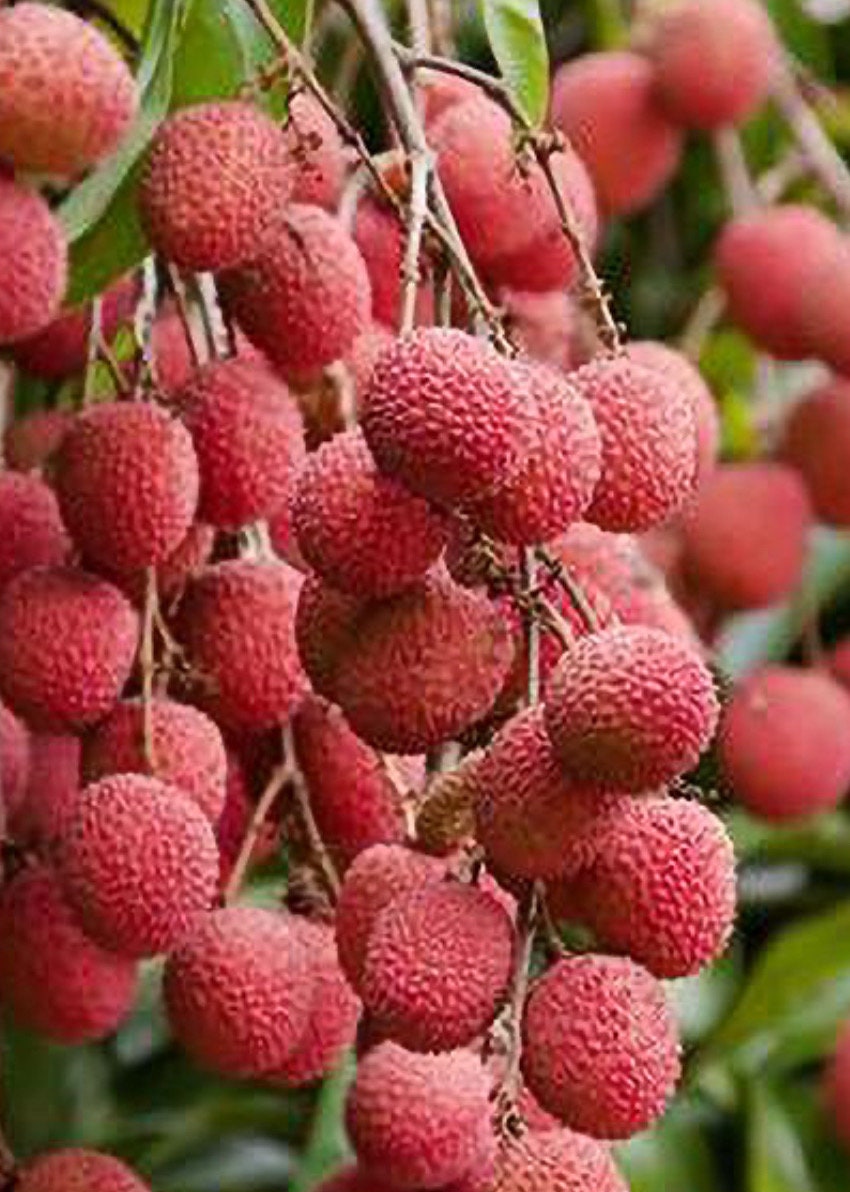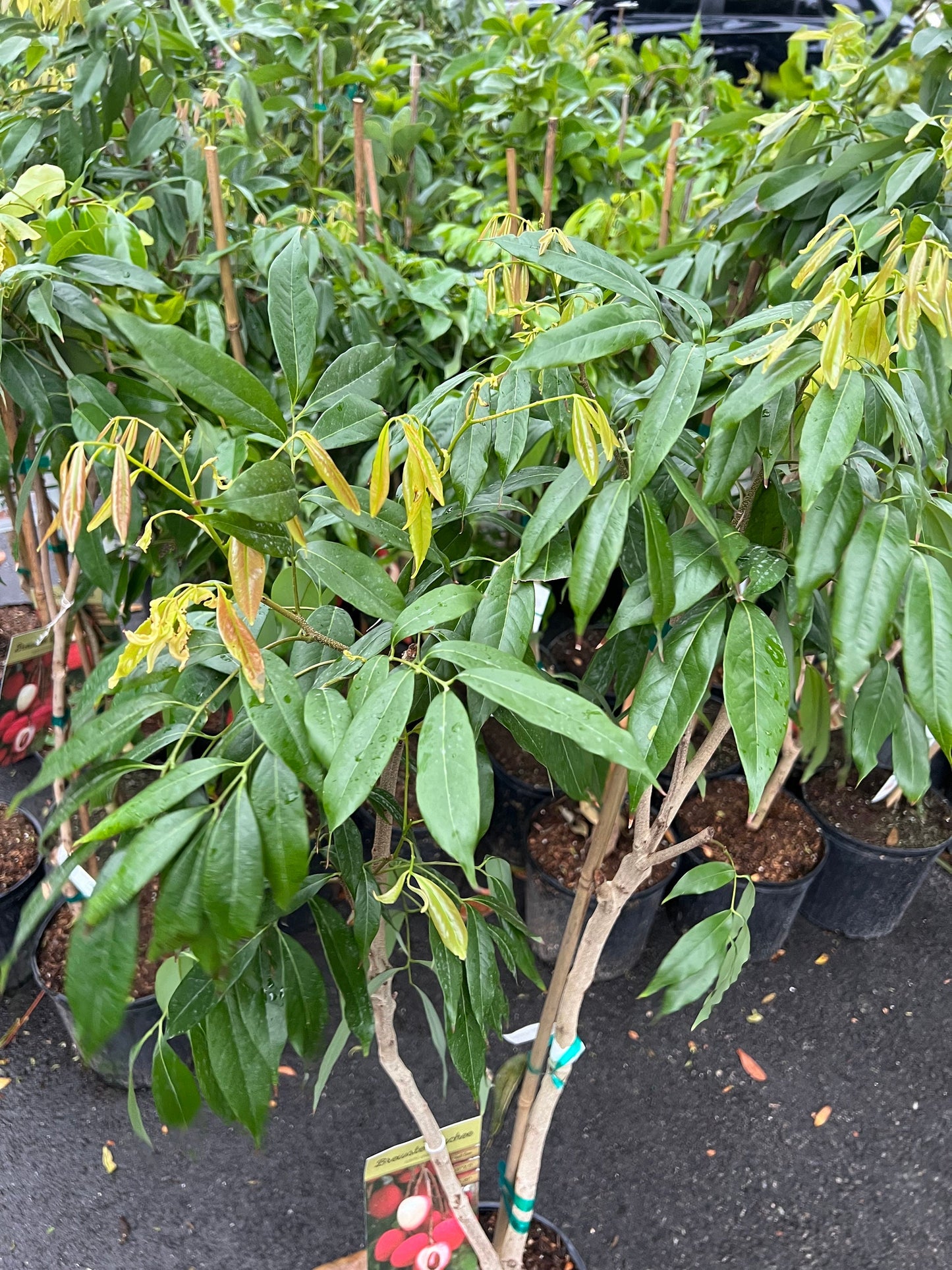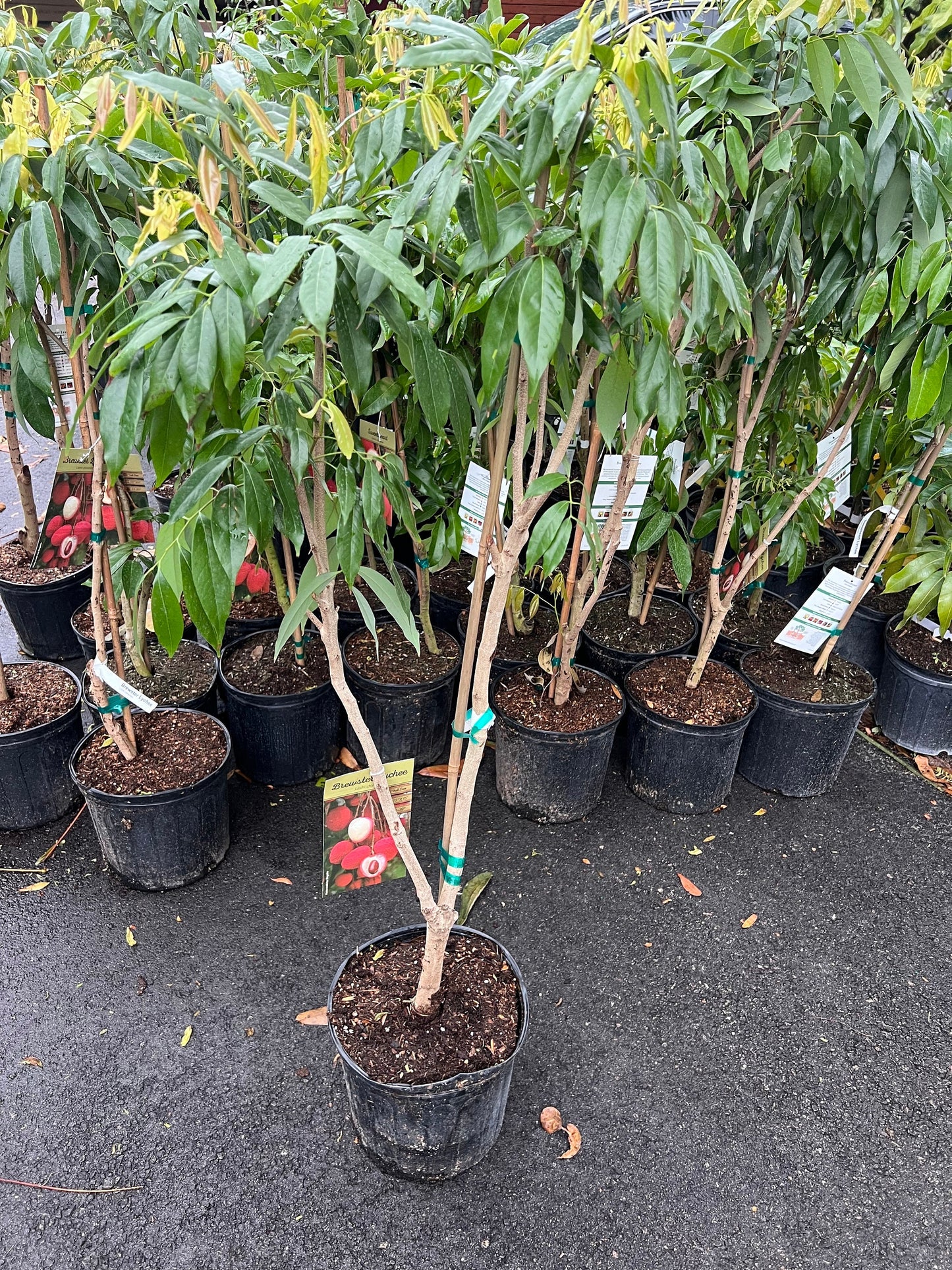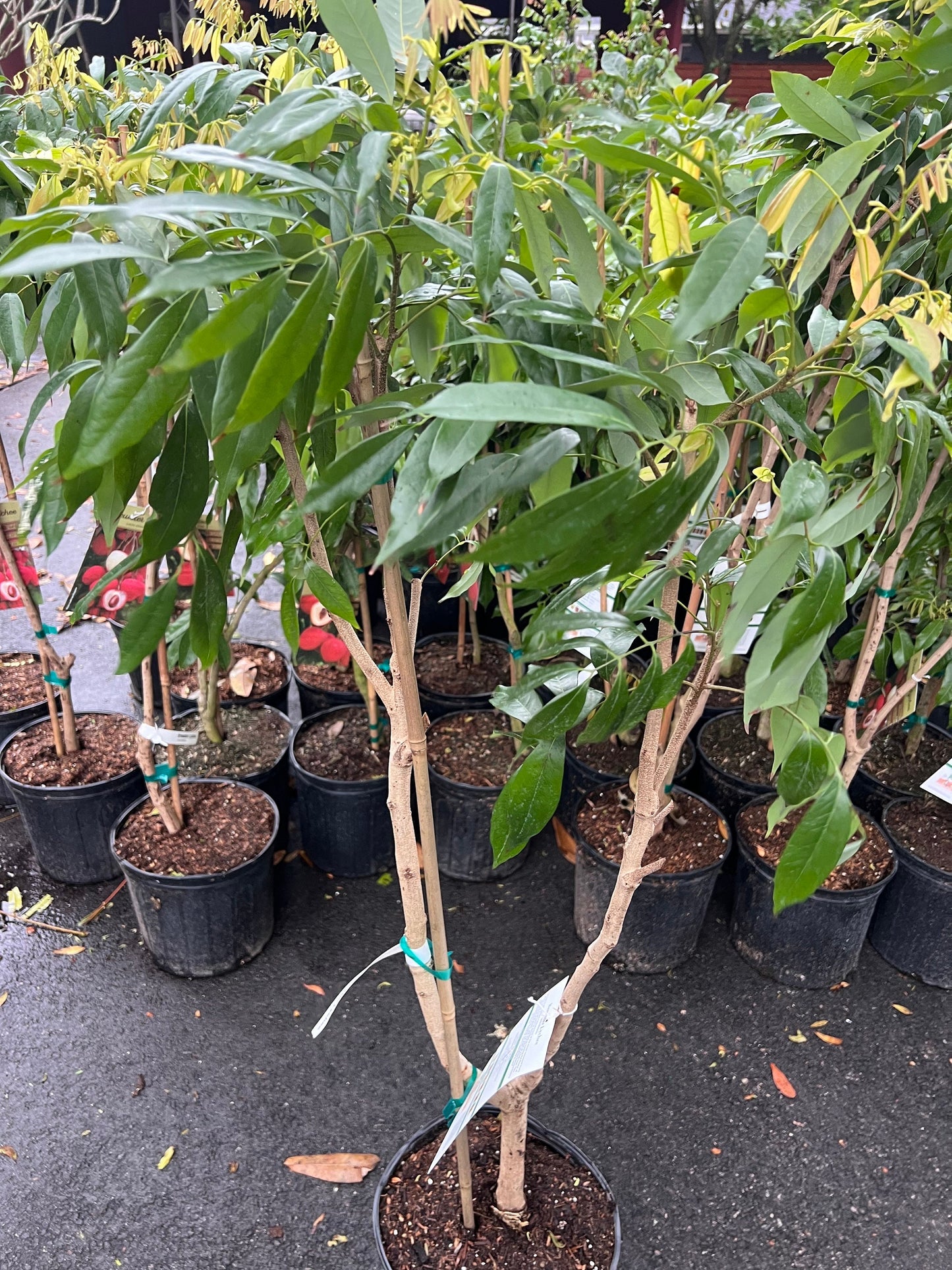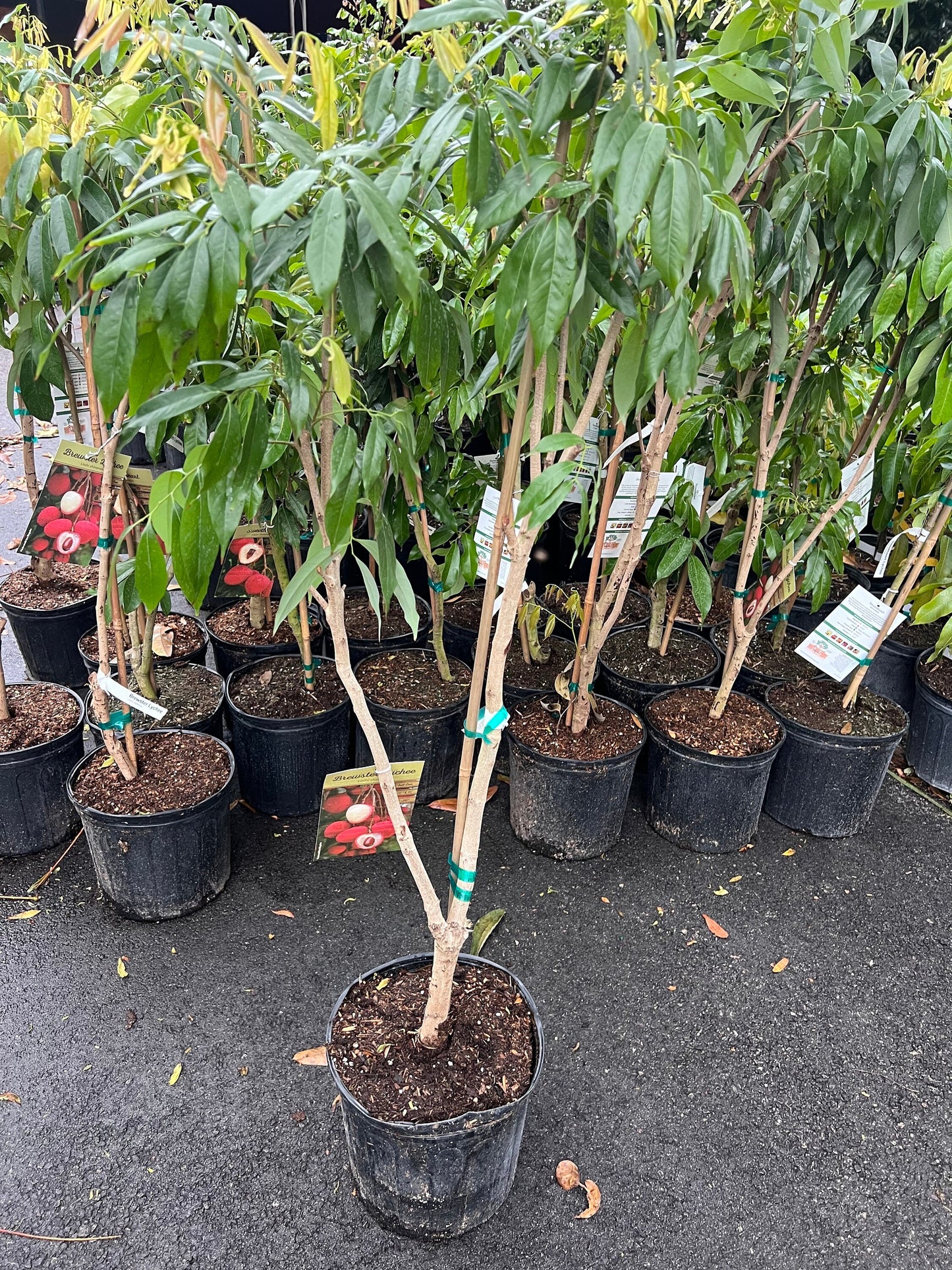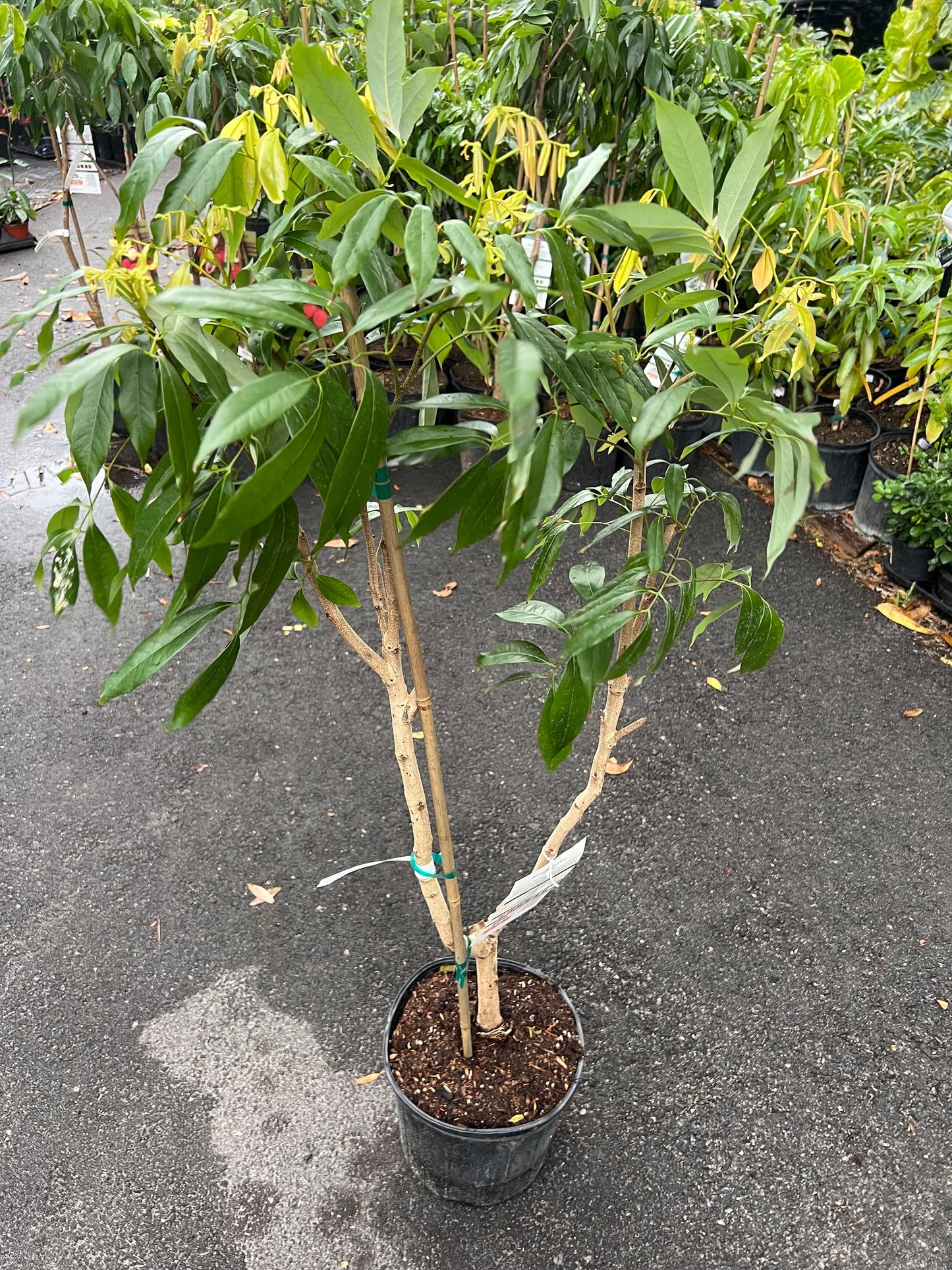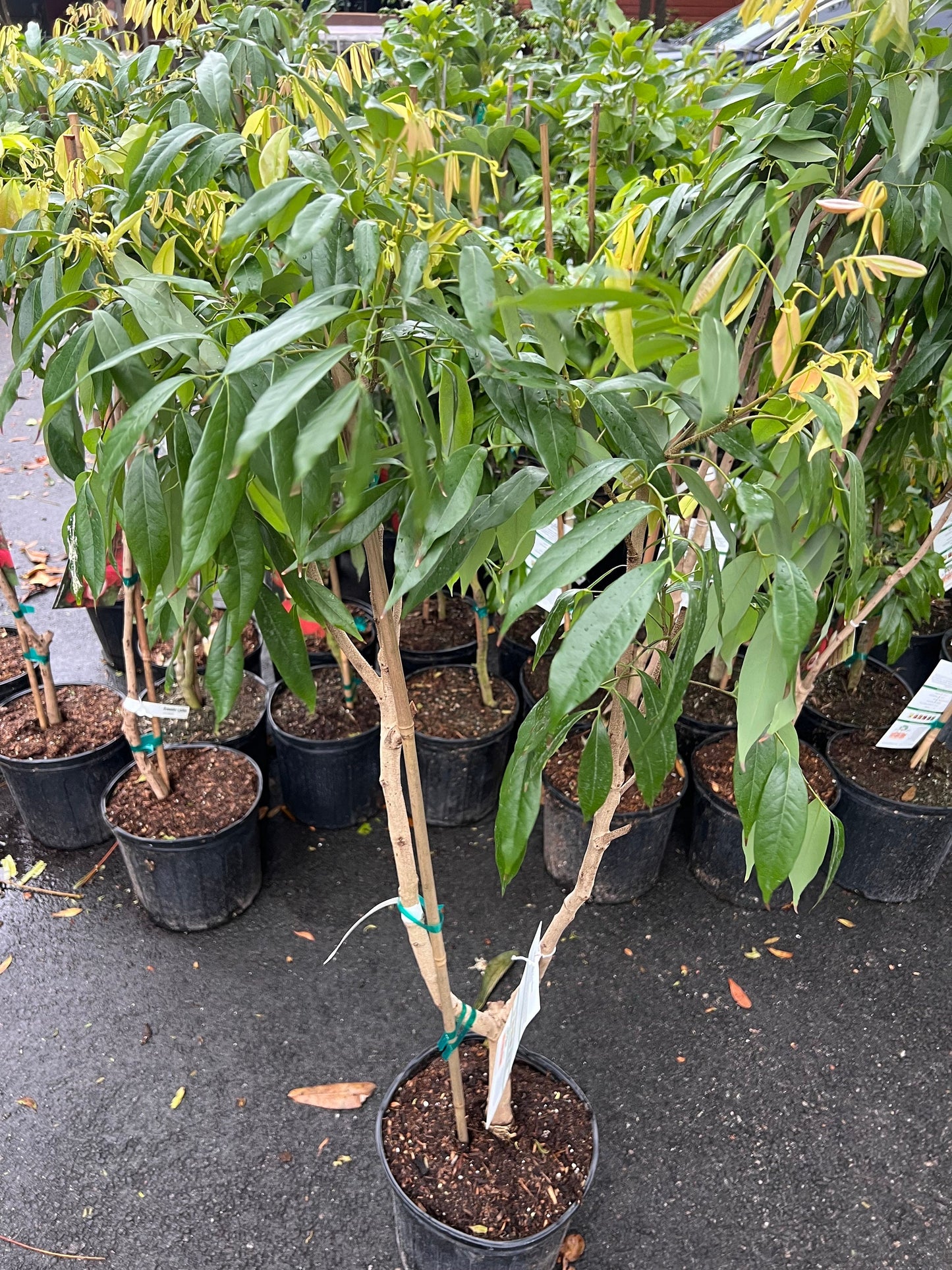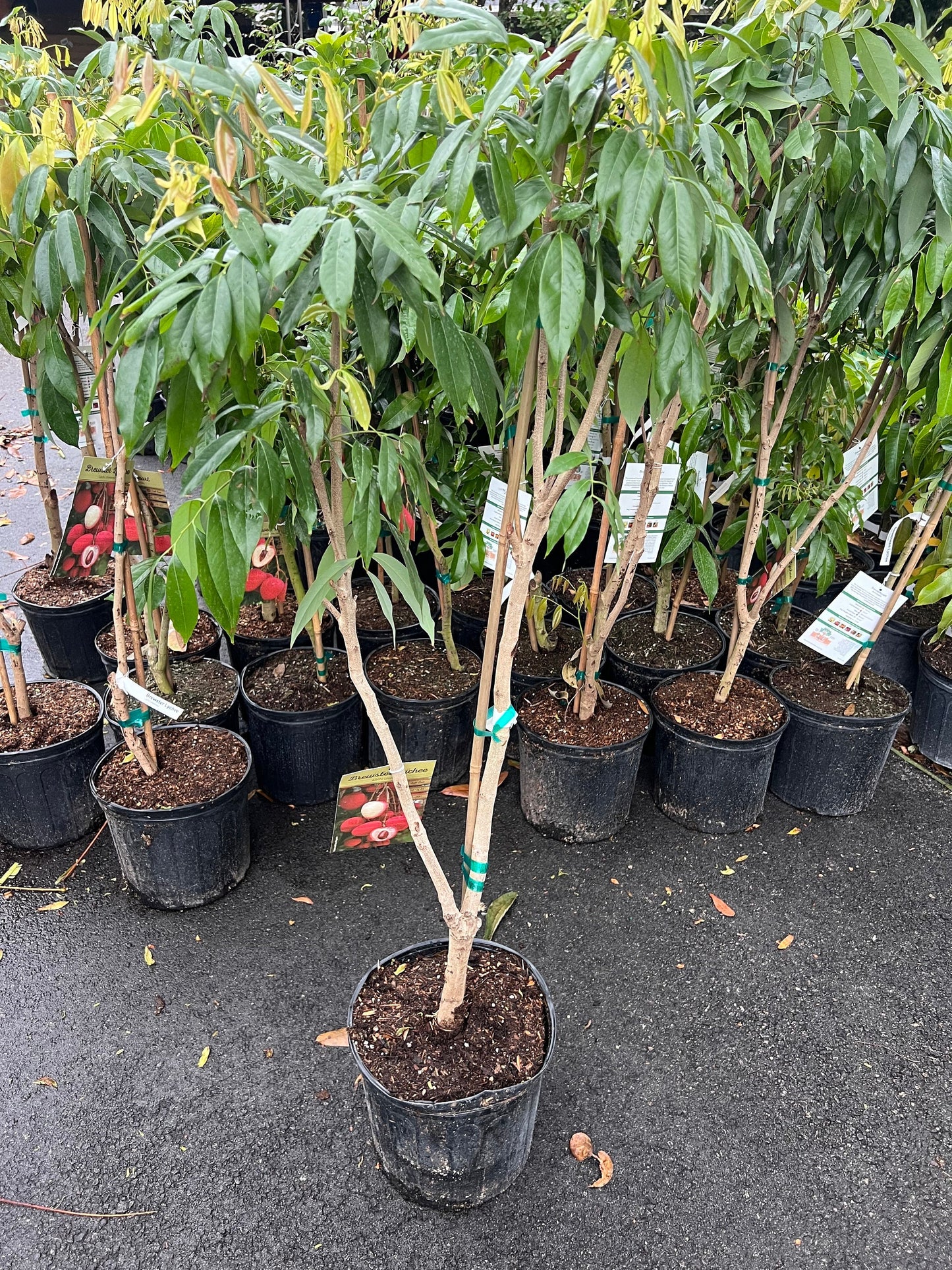Brewster Lychee in 10" Pot, 3 to 4 Ft tall, grafted,No Ship to HI
Brewster Lychee in 10" Pot, 3 to 4 Ft tall, grafted,No Ship to HI
Couldn't load pickup availability
Note: You will receive one Brewster Lychee tree in a 3-Gallon pot, similar to the pictures.
Brewster Lychee (Litchi chinensis) is a popular variety of lychee known for its sweet, aromatic flavor and larger fruit size. Originating in tropical Asia, it thrives in warm, sunny conditions and produces clusters of fragrant flowers that develop into fruit in late spring to early summer.
1. Light Requirements
- Full Sun: Lychee trees need at least 8 hours of direct sunlight daily to produce the best fruit.
- Avoid Shade: Partial shade can stunt growth and reduce fruit yield. Place the tree in a sunny spot, such as a south-facing patio or balcony.
2. Watering
- Consistent, Deep Watering: Water deeply when the top 1-2 inches of soil dry out, especially during spring and summer. Ensure the soil drains well to prevent root rot.
- Fruit Set Stage: During fruiting, maintain consistent moisture to support fruit development. Reduce watering in winter as the tree enters semi-dormancy.
3. Soil Requirements
- Well-Draining, Slightly Acidic Soil: Brewster Lychee prefers soil with a pH of 5.5-6.5, rich in organic matter. Loamy or sandy soil works best.
- Avoid Alkaline Soil: Alkaline soils can cause nutrient deficiencies.
4. Temperature and Humidity
- Warm Conditions: Lychee thrives between 75°F to 95°F (24°C to 35°C) and is frost-sensitive, so protect it from temperatures below 32°F (0°C).
- Moderate to High Humidity: Preferably in a humid environment. In dry climates, use a humidifier or mist the leaves. For container trees, place the pot on a humidity tray with water and pebbles.
5. Fertilizing
- Regular Feeding: During spring and summer, use a balanced fertilizer high in potassium and phosphorus (e.g., 8-3-9) to promote fruiting.
- Avoid Excess Nitrogen: Too much nitrogen can promote foliage growth over fruit production.
- Reduce Fertilizing in Fall/Winter: When the tree is dormant, stop or reduce fertilizing.
6. Pruning and Maintenance
- Light Pruning: Prune in early spring to shape the tree, remove dead wood, and improve airflow. Remove any crossing branches or excessive growth.
- Control Tree Size: Regular pruning helps control size, especially for container-grown trees.
- Remove Suckers: Regularly remove suckers from the base to direct energy into healthy growth.
7. Pollination
- Self-Pollinating: Brewster Lychee is self-pollinating, but cross-pollination by bees or insects can improve fruit yield.
- Encourage Pollinators: Plant nectar-rich flowers nearby or keep plants that attract pollinators. For indoor trees, hand-pollinate by transferring pollen with a small brush.
8. Pests and Diseases
- Common Pests: Lychee trees can attract aphids, mealybugs, scale insects, and whiteflies. Use insecticidal soap or neem oil for pest control.
- Fungal Diseases: Watch for powdery mildew and root rot. Ensure good air circulation and avoid overhead watering.
- Fruit Flies: Use fly traps or cover fruit clusters with fine mesh bags during ripening.
9. Harvesting
- Fruit Maturity: Brewster Lychees ripen 5-6 months after flowering, typically in late spring to early summer. Harvest when the rind turns from green to red and feels slightly soft.
- Harvesting Method: Cut the fruit with a short stem attached. Handle carefully as lychees are delicate and perishable.
10. Repotting (For Container-Grown Trees)
- Repot Every Few Years: Repot the tree every 2-3 years as it outgrows its pot. Choose a container 1-2 sizes larger with drainage holes. Use fresh, well-draining potting mix.
The Brewster Lychee tree thrives in full sun, warm temperatures, and well-draining, slightly acidic soil. Consistent watering is key, especially during fruiting, and feeding with a balanced fertilizer helps promote fruit production. Pruning is necessary for tree size control and better airflow. Though self-pollinating, insect pollination can improve yields. Be vigilant about pests and diseases and harvest fruit when ripe. With proper care, Brewster Lychee trees can produce delicious fruit for many years.
Share
